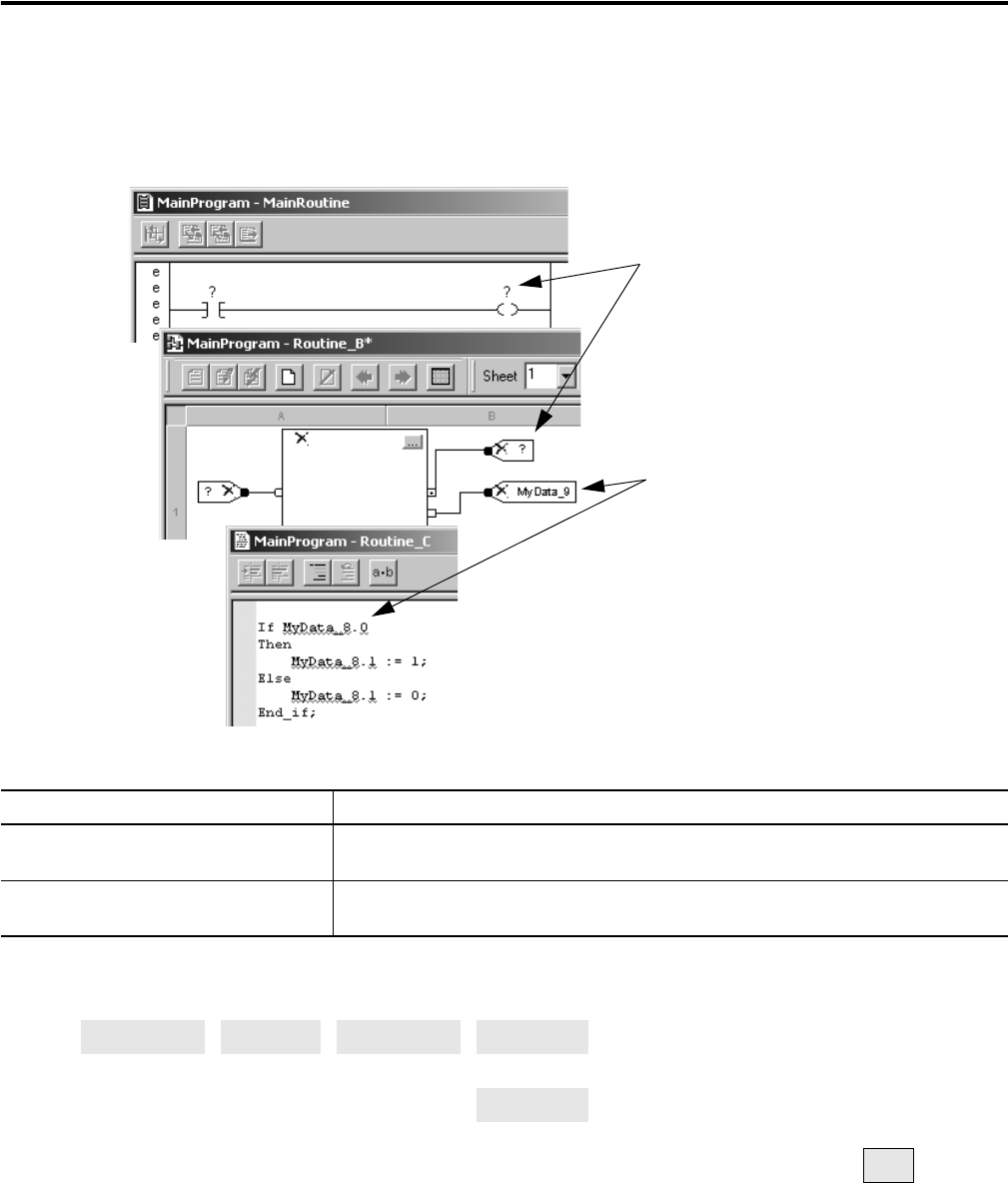Quick Start Owner's manual
Table Of Contents
- 1756-QS001E-EN-P, Logix5000 Controllers Quick Start
- Summary of Changes
- Table of Contents
- 1 - Program and Test a Simple Project
- What You Need
- Before You Begin
- Follow These Steps
- Create a Project for the Controller
- Add Your I/O Modules
- Look at Your I/O Data
- Ladder Logic
- Enter a Function Block Diagram
- Assign Alias Tags for Your Devices
- Establish a Serial Connection to the Controller
- Download a Project to the Controller
- Select the Operating Mode of the Controller
- 2 - Organize a Project
- 3 - Program Add-On Instructions
- What You Need
- Follow These Steps
- Insert an Add-On Instruction
- Copy an Add-On Instruction Definition
- Import an Add-On Instruction Definition
- Access a Parameter That Is Not Visible
- Monitor or Change the Value of a Parameter of an Add-On Instruction
- View the Logic of an Add-On Instruction
- Edit and Monitor an Add-On Instruction
- Update an Add-On Instruction to a Newer Revision
- 4 - Program an Equipment Phase
- 5 - Program a Project Offline
- 6 - Document a Project
- 7 - Go Online to the Controller
- 8 - Program a Project Online
- 9 - Troubleshoot the Controller
- Index
- Back Cover

Publication 1756-QS001E-EN-P - October 2009 89
Program a Project Offline Chapter 5
Assign Operands
RSLogix 5000 software lets you program according to your workflow. You can enter logic without assigning
operands or defining tags. Later, you can go back and assign or define the operands to complete the logic.
A tag name follows this format:
Item Description
A This instruction is missing an operand. You can enter and save logic without assigning
operands. This lets you develop your logic in iterations and save libraries of code for re-use.
B This is an undefined tag. You can enter and save logic without defining all the tags. This
lets you develop your logic in iterations.
Name
[Element] .Member [Element] .Bit
or
.[Index]
= Optional
A
B










